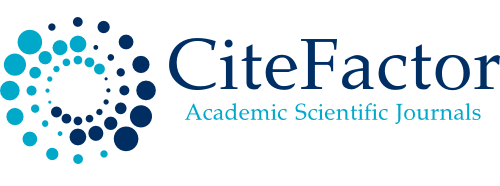Logical Reasoning and Teaching Mathematical
DOI:
https://doi.org/10.61841/vm8r0809Keywords:
-central tendency,, constructivism, dispersion, knowledge mathematical,, metacognitionAbstract
The article addresses general knowledge about constructivism, significant knowledge, metacognition and logical reasoning, which constitute the theoretical basis for the methodological development of an alternative teaching-learning process for Mathematical Statistics, in a meaningful and coherent way. To do this, it starts with elementary contents of Arithmetic and Geometry, as a representation on the number line and Pythagorean Theorem to induce the formulas of central tendency and dispersion measures and provide the student with tools for understanding the contents. This proposal helps the student to learn more easily, not only Mathematical Statistics, but also provides a method based on logical reasoning, where the cause-effect relationship is evidenced, from the simple to the complex, and the verification of the main phenomena, which is useful for coping with cognitive tasks in broader fields.
Downloads
References
1. Alava, L. A. C., Castillo, G. A. L., Macias, J. C. M., Segarra, J. C. G., & Molina, L. A. V. (2018). Energy analysis for designing photovoltaic power plant in building of the faculty of mathematics. International Journal of Physical Sciences and Engineering, 2(3), 10-22. https://doi.org/10.29332/ijpse.v2n3.192
2. Ausubel, D.P, J. Novak H. & Hanesian. (1983). Psicología Educativa: Un punto de vista cognoscitivo. 2° Ed.TRILLAS México p.10 - 50.
3. Bakker, A., & Gravemeijer, K. P. (2004). Learning to reason about distribution. In The challenge of developing statistical literacy, reasoning and thinking (pp. 147-168). Springer, Dordrecht.
4. Batanero, C. (2000). Meaning and understanding of central position measurements. One. Journal of Didactics of Mathematics , 25 , 41-58.
5. Behar, R., & Ojeda, M. (2000). El proceso de aprendizaje de la estadística:¿ Qué puede estar fallando. Heurística, 10, 26-43.
6. Carretero, M. (2001). Metacognición y educación. Buenos Aires: Aique.
7. Chemmel, U., & Phillipe, R. (2018). The role of pragmatics in cross-cultural. Linguistics and Culture Review, 2(1), 45-59. https://doi.org/10.37028/lingcure.v2n1.11
8. Delval, J. (1996). El desarrollo humano. Madrid: Siglo XXI. p.100 - 120.
9. Diéguez, A. Batista, M. Figueroa, H. (2019) Trigonometría significativa y metacognición. Entrevista a Reuven Feuerstein.
10. Espinosa, A. H. R., Estevez, A. G., Roche, J. R. F., Figarola, Y. M., & Rodriguez, D. L. (2018). Psychological intervention for development of disease awareness in addicts: Villa Colibri therapeutic community of Santiago de Cuba. International Journal of Health Sciences, 2(3), 72-80. https://doi.org/10.29332/ijhs.v2n3.232
11. Feuerstein, R. y Krasilowsky, D. (1972). Intervention strategies for the significant
12. Flavell, J. H. (1976). Metacognitive aspects of problem solving. The nature of intelligence.
13. Glaser, R. (1994). Learning theory and instruction. En: G. D'Ydewalle, P. Eelen y B. Hispanoamericana, SA, Naucalpan de Juárez, Edo. De México.
14. Holmes, P. (1980). Teaching Statistic. Sloug: Foulsham Educational, UK, p.1116,
15. Mataram, I. K. A., Antarini, A. A. N., & Agustini, N. P. (2020). Molatisu implementation increasing integrated health post cadre skills under five years old related balance menu preparation. International Journal of Health Sciences, 4(1), 8-17. https://doi.org/10.29332/ijhs.v4n1.397
16. Moore, D. S. (1992). Teaching statistics as a respectable subject. Statistics for the twenty-first century, 14-25.
17. Osses Bustingorry, S., & Jaramillo Mora, S. (2008). Metacognition: a way to learn to learn. Pedagogical studies (Valdivia) , 34 (1), 187-197.
18. Paramita, D. P., Adiatmika, I., Kuswardhani, T., & Mustika, I. W. (2018). Physiological and psychosocial change and the need of health intervention model for elderly. International Journal of Health Sciences, 2(2), 61-67. https://doi.org/10.29332/ijhs.v2n2.160
19. Peniro, R., & Cyntas, J. (2019). Applied linguistics theory and application. Linguistics and Culture Review, 3(1), 1-13. https://doi.org/10.37028/lingcure.v3n1.7
20. Perez, J. Merino, M. (2015). Definición de razonamiento lógico.
21. Piaget, J. (1983). Teorías del Lenguaje - Teorías del Aprendizaje. El debate Piaget-Chomsky. Barcelona: Crítica.
22. Piaget, J., & Acevedo, H. (1968). Educación e instrucción. Proteo.
23. Reich, Ricardo. Convenios de Desempeño 2011-2014. In: seminario sct-chile innovación y armonización, 1., 2011, Pucon. Presentation. Pucon: Gobierno de Chile, 2011. p.1-41.
24. Roa Ordóñez, H. (2016). Creative and metacognitive strategies in musical learning. Civilize Social and Human Sciences , 16 (30), 207-222.
25. Rodriguez, J. A. P., Perez, H. M. D., & Sabates, H. R. R. (2020). Psychological actions to increase tolerance to frustration in pitchers: category 15-16 years. International Journal of Health Sciences, 4(1), 1-7. https://doi.org/10.29332/ijhs.v4n1.377
26. Sánchez, G. (2007). La estadística aplicada al análisis económico. Universidad Autónoma Nacional. México
27. Shaughnessy, J. M. (2007). Research on statistics' reasoning and learning. Second handbook of research on mathematics teaching and learning, 957-1009.
28. Suiraoka, I. P., Duarsa, D. P. P., Wirawan, I. D. N., & Bakta, I. M. (2017). Perception of parents, teachers, and nutritionist on childhood obesity and barriers to healthy behavior: a phenomenological study. International Journal of Health Sciences, 1(2), 1-11. https://doi.org/10.21744/ijhs.v1i2.25
29. Sumba, E. F. S., Sumba, A. V. S., Castillo, G. A. L., & Rodríguez, J. A. P. (2020). Impact of distributed generation in the electrical system of Ecuador. International Journal of Physical Sciences and Engineering, 4(1), 1-10. https://doi.org/10.29332/ijpse.v4n1.389
30. UNESCO. 50 Years for Education [en línea]. 1997. En: Rodríguez, F, E. Maldonado. A, C. Sandoval. P, R. Comprensión de las medidas de tendencia central: un estudio comparativo en estudiantes de pedagogía en matemática en dos instituciones formadoras chilenas. Scielo, Brasil http://www.scielo.br/pdf/aval/v21n3/1982-5765-aval-21-03-00929.pdf
Downloads
Published
Issue
Section
License

This work is licensed under a Creative Commons Attribution 4.0 International License.
You are free to:
- Share — copy and redistribute the material in any medium or format for any purpose, even commercially.
- Adapt — remix, transform, and build upon the material for any purpose, even commercially.
- The licensor cannot revoke these freedoms as long as you follow the license terms.
Under the following terms:
- Attribution — You must give appropriate credit , provide a link to the license, and indicate if changes were made . You may do so in any reasonable manner, but not in any way that suggests the licensor endorses you or your use.
- No additional restrictions — You may not apply legal terms or technological measures that legally restrict others from doing anything the license permits.
Notices:
You do not have to comply with the license for elements of the material in the public domain or where your use is permitted by an applicable exception or limitation .
No warranties are given. The license may not give you all of the permissions necessary for your intended use. For example, other rights such as publicity, privacy, or moral rights may limit how you use the material.









